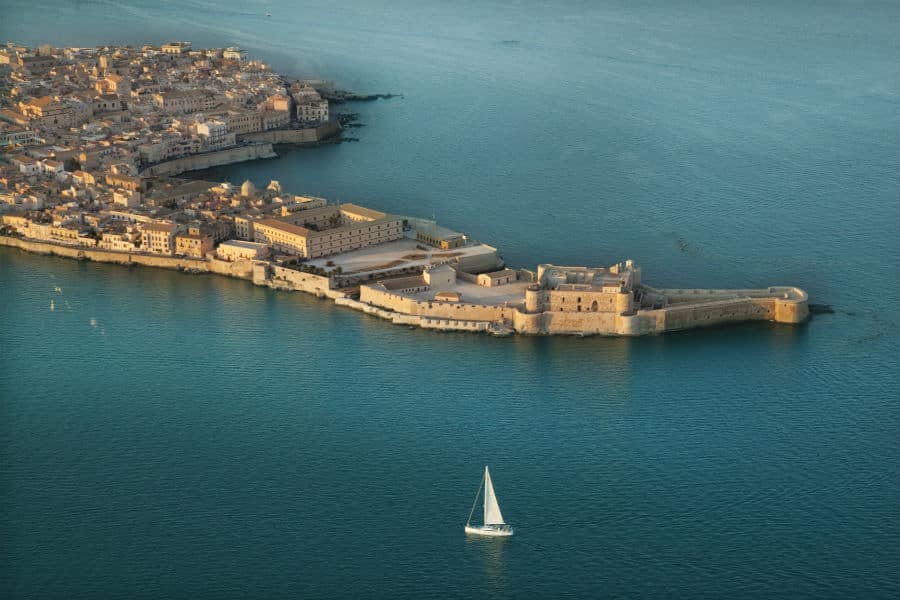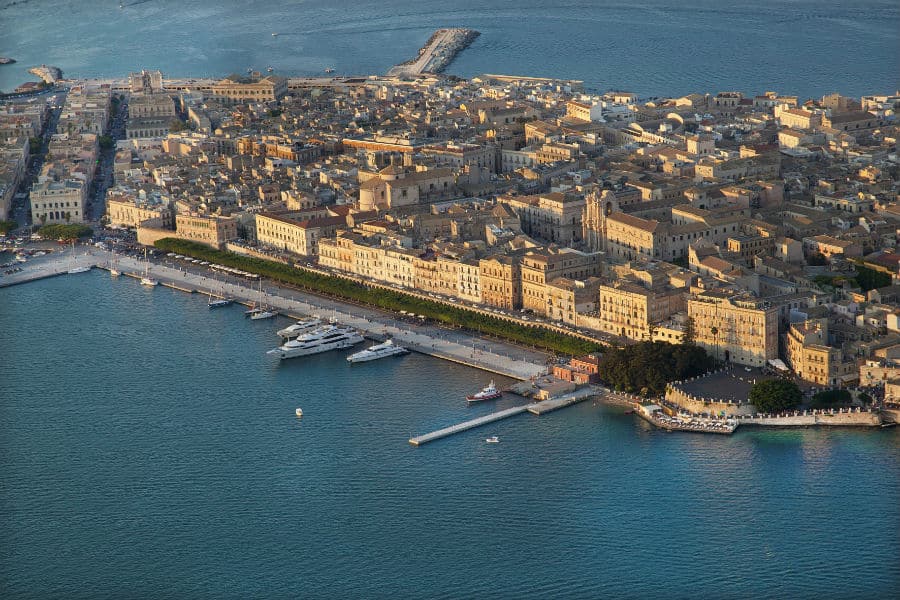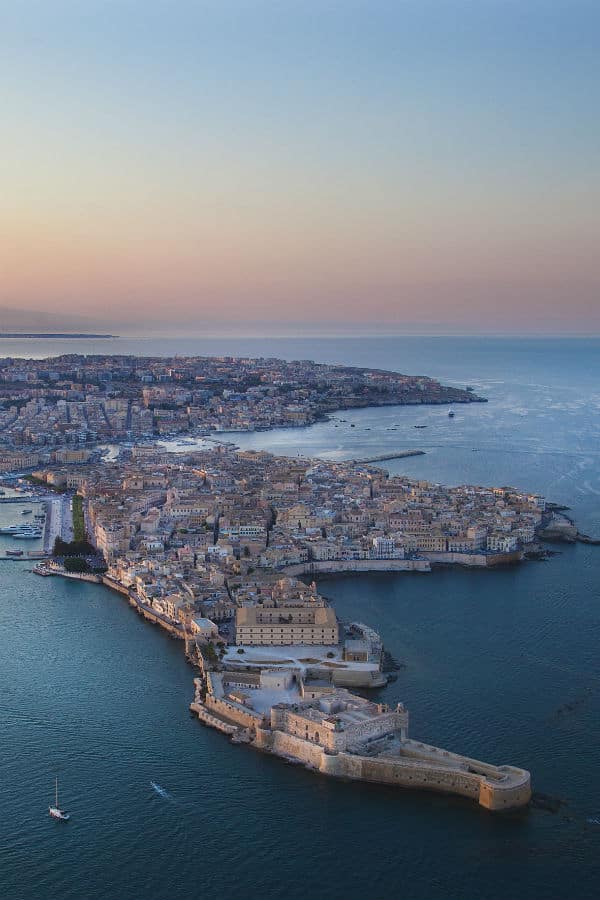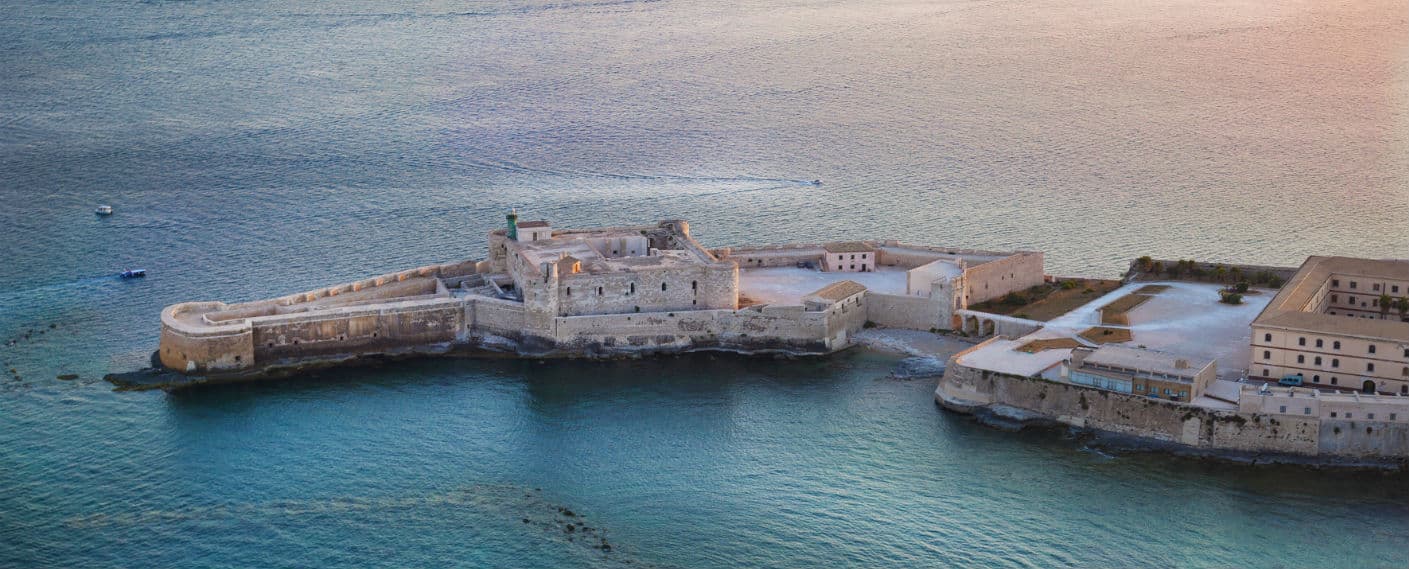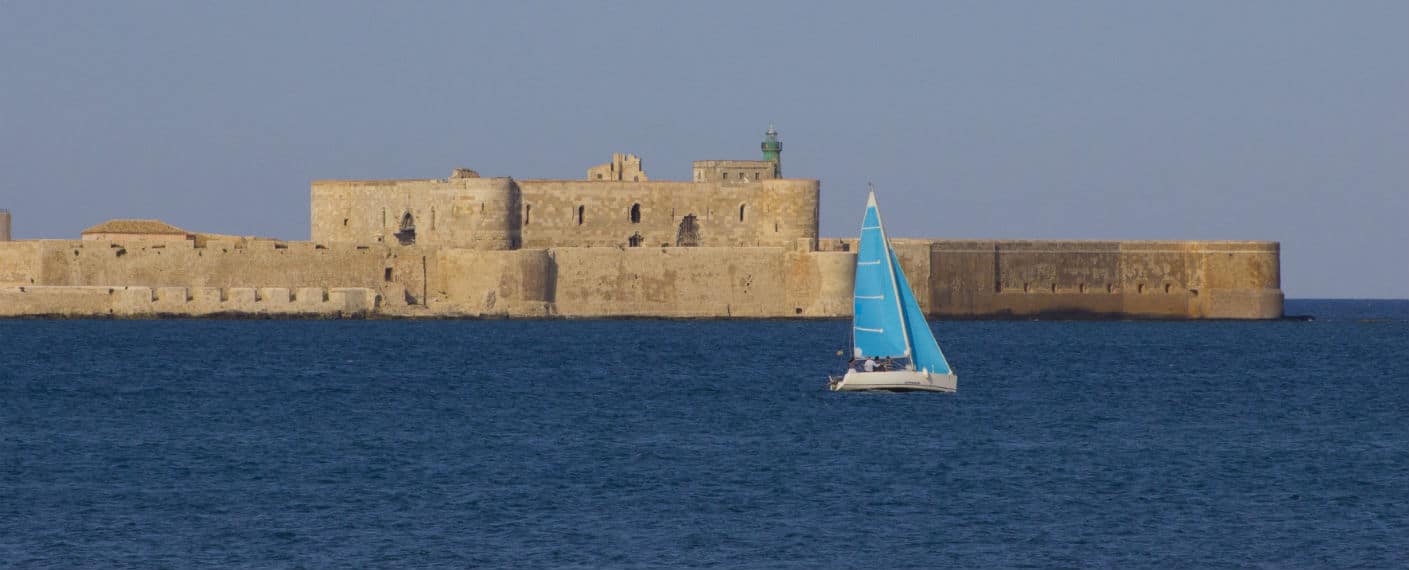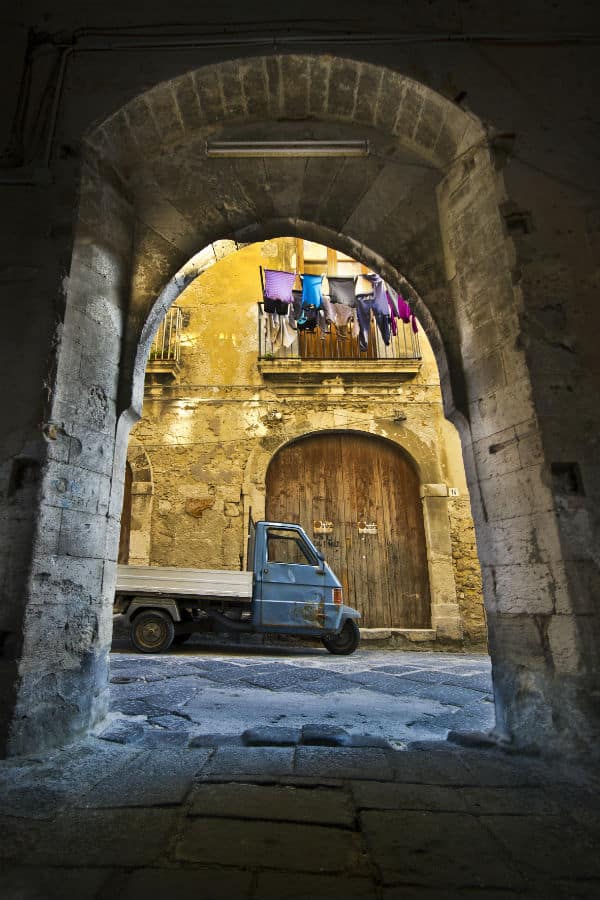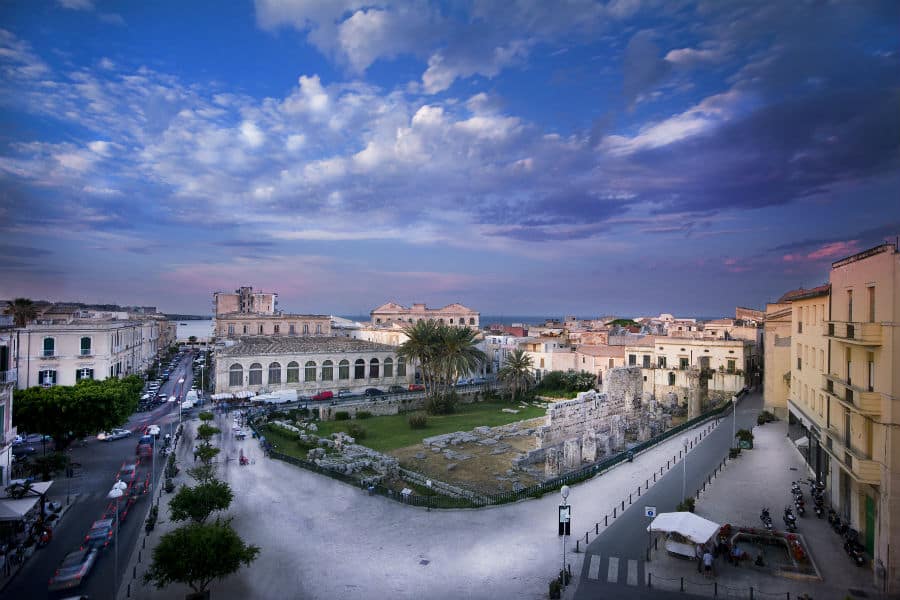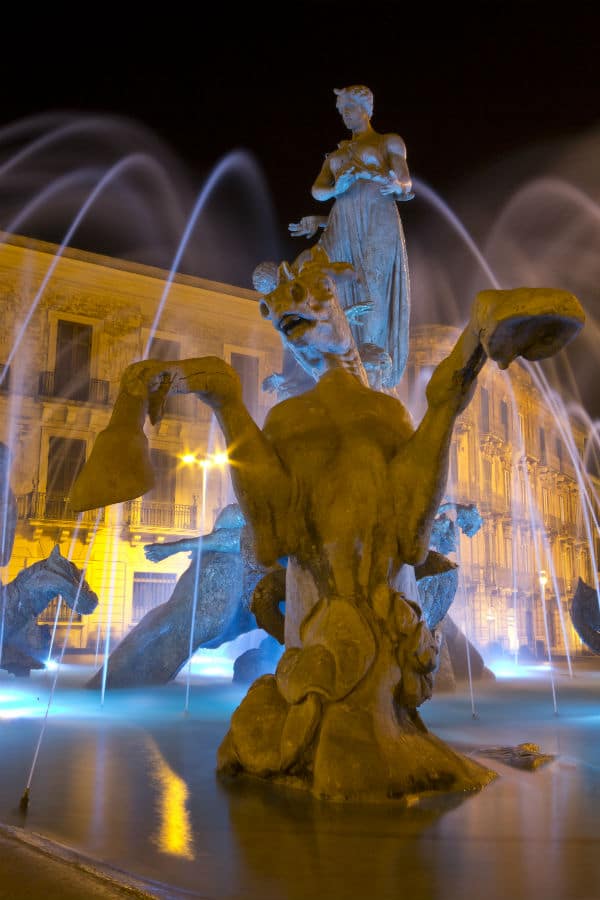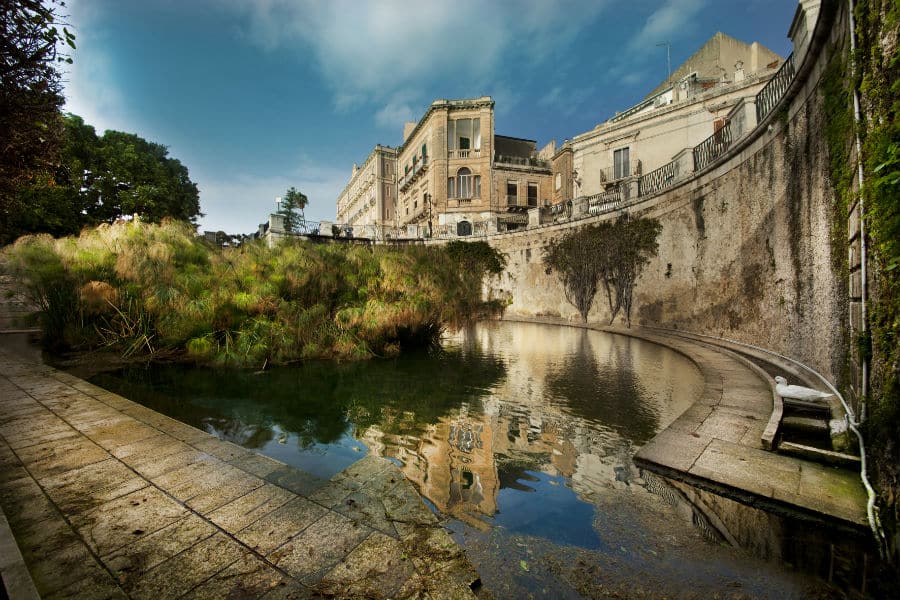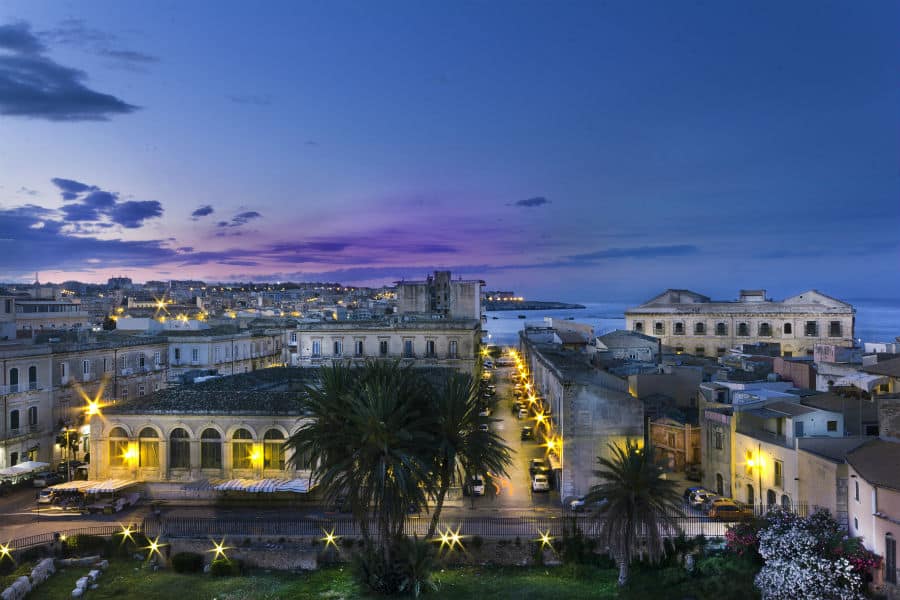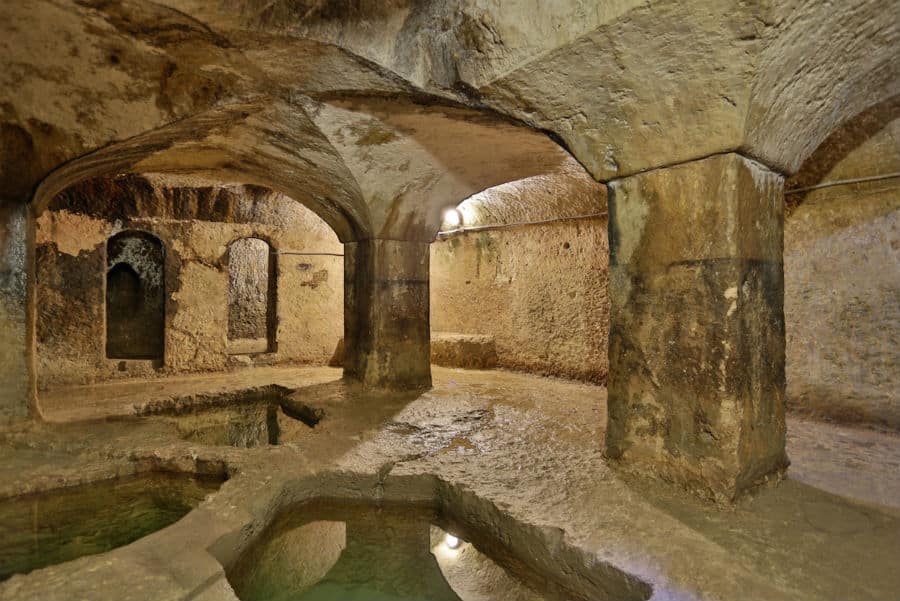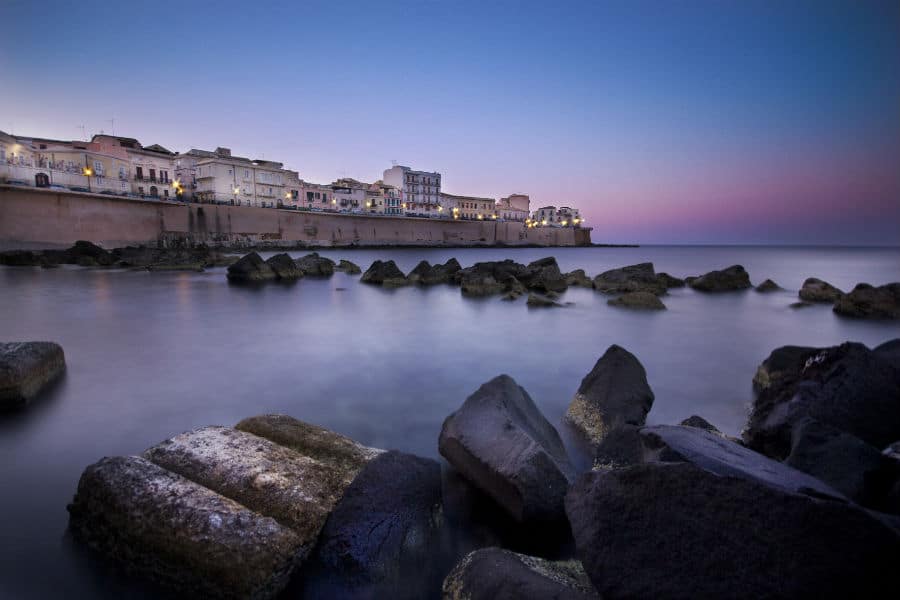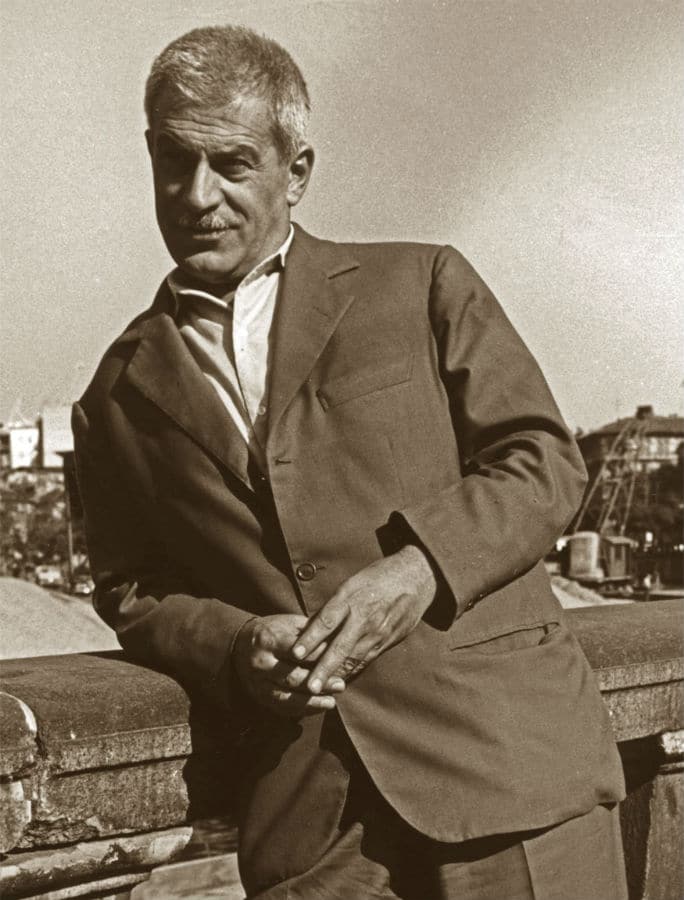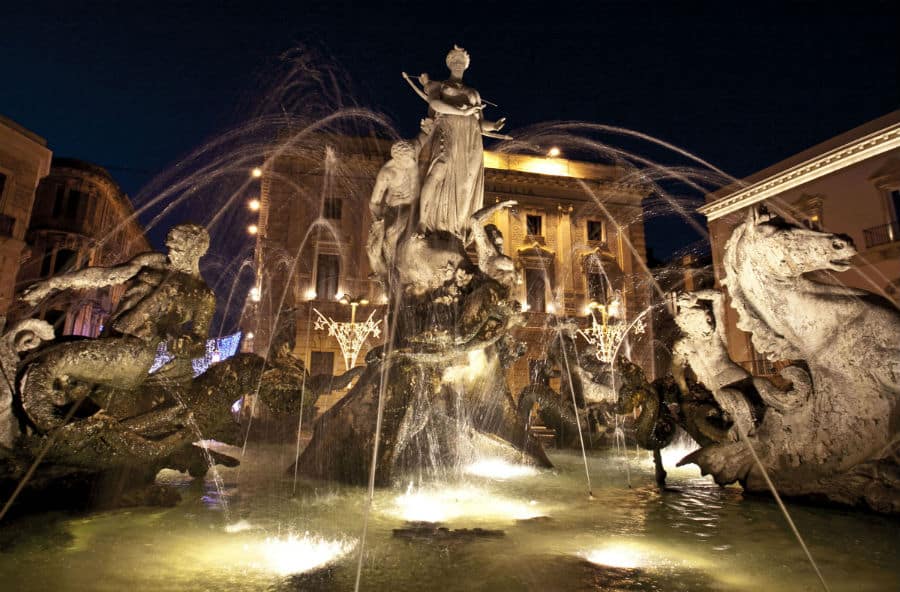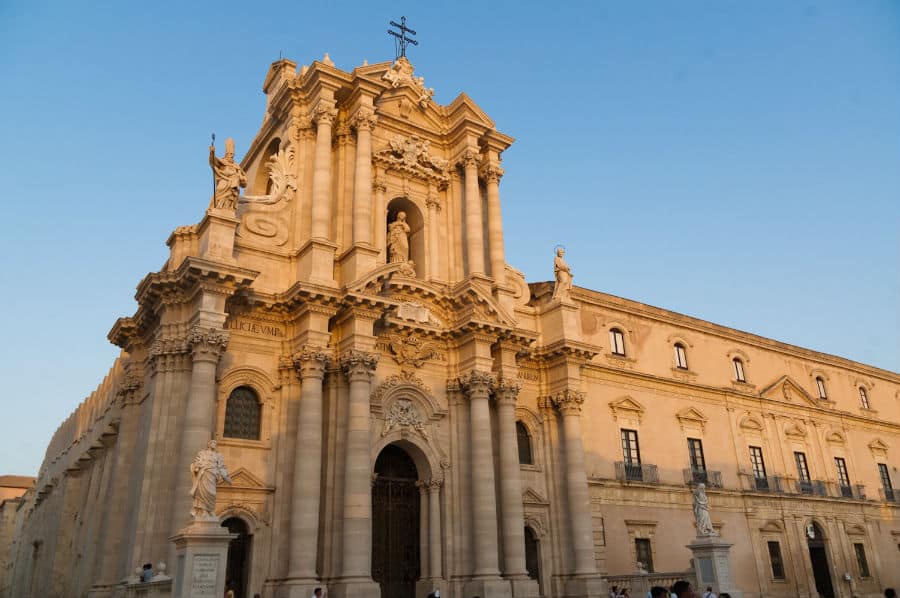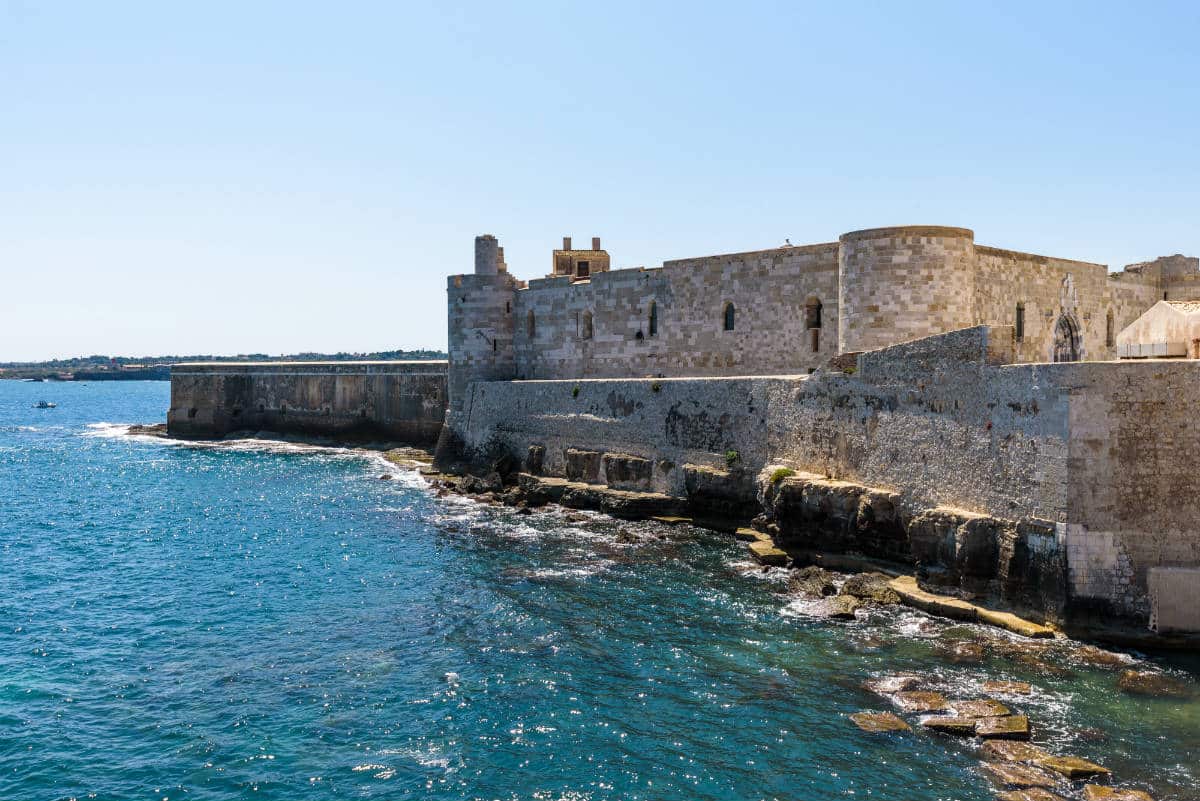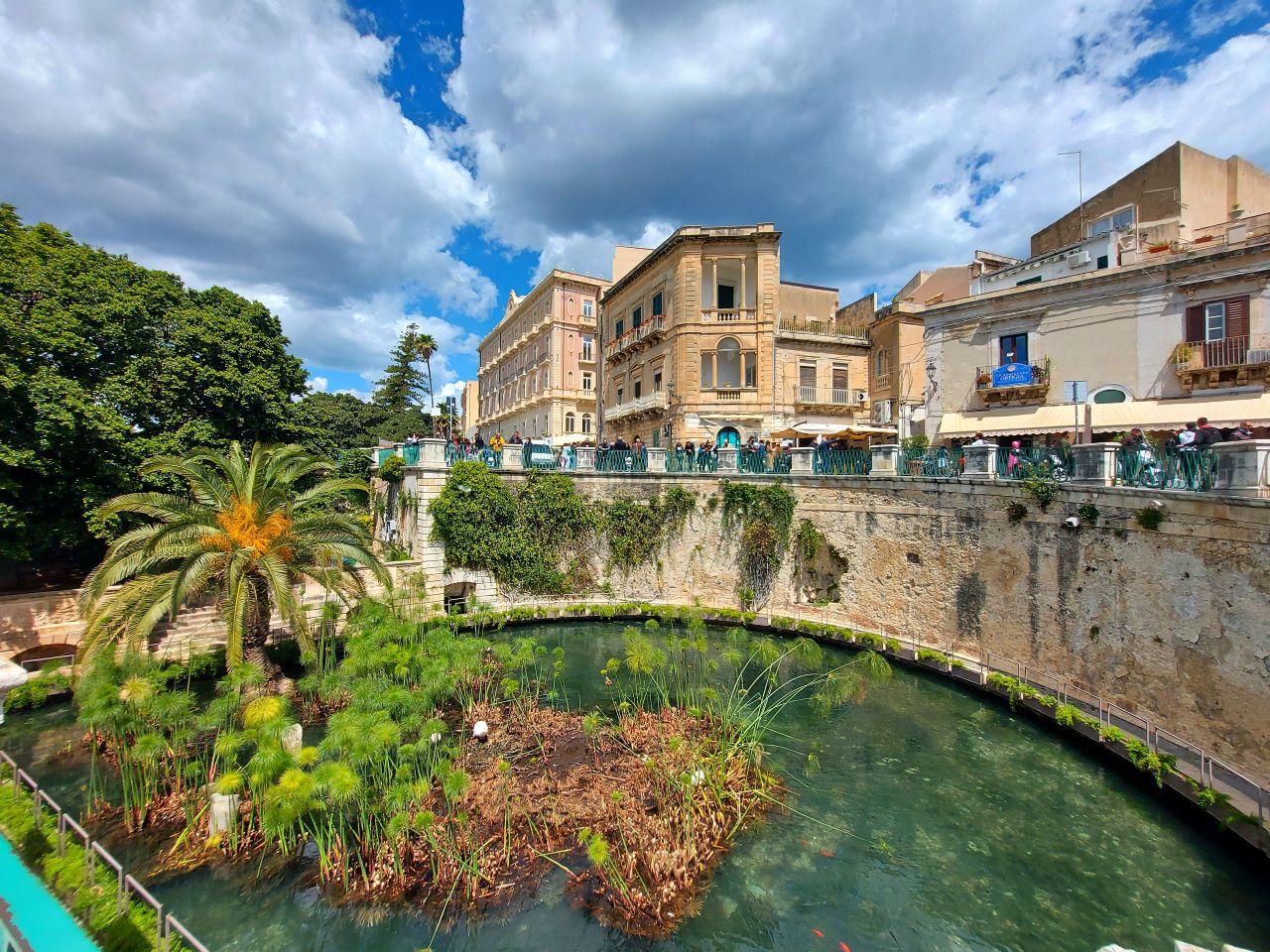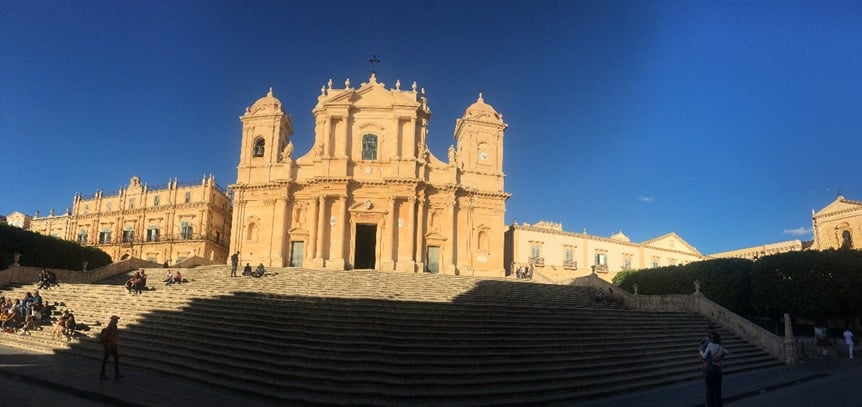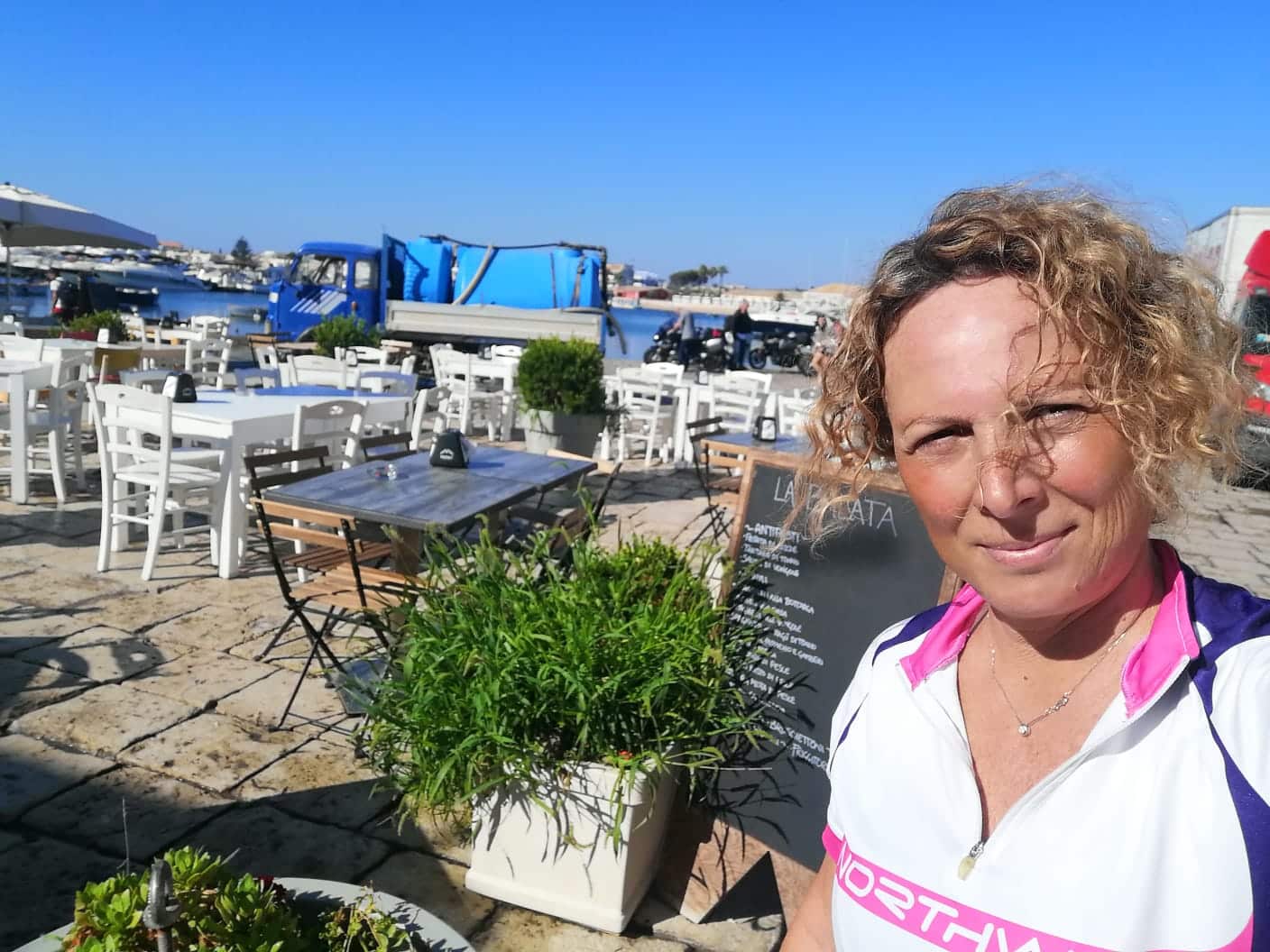Ortigia (Ottiggia in dialect siracusano, Ortygia, Ὀρτυγία in ancient Greek) is the toponym of the island which is the oldest part of the city of Syracuse, Sicily. Its name derives from the ancient Greek ortyx (ὄρτυξ) which means "Quail". The island of Ortigia is very important to understand the origins of the entire Syracuse, because the sources attest that on this island not far from the mainland, rose the first nucleus of the settlers Corinthians.
The island has always been the heart of the city, testifies to the fact that since the age of the Ancient Bronze Age was inhabited, and bear witness to it also remains of circular huts of the XIV century B.C. referable to the Thapsos civilization. The following arrival of the greeks impelled population sicula to retreat in the hinterland, as tells us Thucydides. But without doubt many dei Siculi remained in Ortigia after the Greek colonization, given that they are the same historical events to narrarci contrasts for the control of the city between gamoroi, descendants of the first settlers Corinthians, and killichirioi, descendants precisely dei Siculi that previously lived in Syracuse and Ortigia. The story continues and the Sicilians Killichirioi are defeated by Gelone of Gela, called in aid from Gamoroi, will become the first tyrant of Syracuse. Ortigia in Greek age was above all initially, the political and religious center of the city; this is demonstrated by the fact that the island was built the Via Sacra (which currently fall within the urban axis of via Dione and of the second stretch of the via Roma), i.e. that track which contained important temples of the gods, as the Artemision and the Athenaion (current Siracusa Cathedral). In Ortigia was built the palace of the tyrant, i.e. the seat of political power of the tyrants Syracusans. The Porto (Porto Grande and Porto Piccolo) had to Ortigia great importance; at the center of the great battles siracusane. The island took part in many of the urban defenses, was also surrounded by imposing walls dionigiane that stretched up to Monte Epipoli, near the Castello Eurialo. During the siege of the Romans in 212 BC, Ortigia became the last district of Siracusa to fall into the hands of Rome. With the help of ships the Carthaginians and the brilliant war machines of Archimedes, the Syracusans resisted for fundamentalists to the Roman army that it could not do other than staying outside the walls aretusee. Ortigia in medieval times became ever more central, given that the population of Syracuse as a result of the great wars (the end of the Roman Empire of the West; the conquest of the Franks and vandals) decreased up to fall almost entirely in the village of the island of Ortigia, depopulated the remaining neighborhoods. The island was further fortified, faced the byzantine vicissitudes of Siracusa, when the city was named the "Capital of the Empire of the Romans" (also called "Capital of the Roman Empire of the East), thus becoming the seat of the Byzantine emperor, Constant II, and flourishing again for a short period, not too happy because the city mal endured taxs, excessive, which the Emperor had given to citizens. Therefore suffered the attack of Constantinople ridiventò that the capital of the Empire, after the son of constant II was to recover the imperial crown. Subsequently the island will face one of the sieges more suffered the history of Siracusa, i.e. the siege Arab 878 d.C., which will reduce the population to hunger and will oblige the yield after months and months of suffering. The Spanish domination represented for Ortigia a decisive moment and in a certain sense an epochal because its urban appearance, and therefore also its cultural image, radically changed volvendo in the manner that even today in contemporary times, it shows. They were in fact the architects desired by the governors of Castile and Aragon to impress on the island the baroque facade, with palaces to the Catalan and fantasies mix between the Sicilian art and Spanish art, which in modern times were the praise and glory of the island, giving it the title of "center of the sicilian baroque", comparable to the baroque of the most renowned, in topic, known. Ortigia was also the seat of the Chamber Reginale; a government body coming from Spain but established on the territory, that gave to its seat a sort of legal title of "state within a State", was instituted by Frederick III of Aragon as a gift to his wife, Eleonora d'Anjou. The '600, '700 and '800 were eras very difficult for the island of Ortigia, which bore the title of the whole "city of Syracuse" inside its walls. Become a military fortress suffered attacks of the Austrians, the defense of the coasts from the Turks, the various steps of the power up to the treaty of Utrecht with which Spain stated in front of Europe to renounce to Sicily, that went well in the hands of Austria with the reigning house of Habsburg. Then came the Savoy from Piedmont but their monarchy in Sicily lasted very little given that neither Spain nor Austria had intention to renounce to the largest island in the Mediterranean. After the gradual abandonment of the historic center occurred between the seventies and eighties of the twentieth century and the consequent increase in crime and degradation, the island has been the subject of a series of urban regeneration projects including Urban that has provided for the opening of numerous accommodation facilities as well as the opening of the Museum of the sea managed by the consortium Syrakosia formed inside the former church of Aracoeli, in Via Gaetano Zummo and other museums important sites in the island.
Ortigia was present in many films with a cast of great level, such as for example Vittorio De Sica; Franco and Ciccio; Walter Chiari; Giuseppe Tornatore; Monica Bellucci and many others. In the streets of the island of Ortigia were filmed scenes of known series national television, as the Montalbano commissioner, written by Andrea Camilleri and interpreted by Luca Zingaretti. But also fiction as the honor and respect, interpreted by Gabriel Garko. Also worthy of mention are the shooting of the film on the life of Caravaggio, filmed in 2007 and directed by Angelo Longoni; significant occasions since Caravaggio was really to Syracuse in his life and in the city is preserved its known painting: the Burial of St Lucy. But Ortigia is not the goal of cinema just for actors and Italian directors, it is in fact also known abroad for its views, its monuments, its flavor and a Mediterranean climate. For example there have shot of the scenes of their films Sicily!, the two French filmmakers Straub E Danièle Huillet, or even here there was also Margarethe von Trotta, winner of Premio Federico Fellini and of the Golden Lion for best film precisely with years of lead, filmed in Siracusa. And the TV drama "ballads of love", directed by Argentinian director Roberto Luis Garay, which has repeatedly chosen Siracusa and province for his shots. Ortigia You can therefore define "meta inspiration" for the many filmmakers who choose to go. After visiting to Ortigia in 2010, Roberto Benigni there has subsequently purchased a dwelling baroque that has restored respecting the initial shapes and the context of the place. Ortigia is also the seat of the cinematic events that occur in Syracuse, as the Ortigia Festival and the Ares Film Festival.


